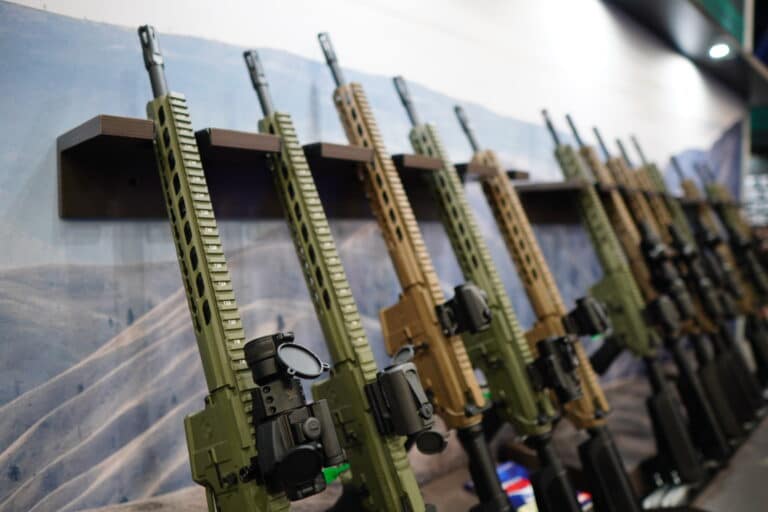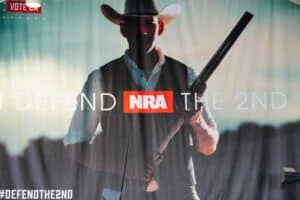There will not be a new federal “assault weapons” ban this year. Or any year in the near future.
It’s not simply because of Senate Republican opposition either. The Democrat-controlled House of Representatives won’t pass one. It hasn’t even tried to since the party took control in 2018.
In fact, there hasn’t been a new assault weapons ban in 25 years. Only seven states and the District of Columbia have a ban in place at all. Some of those states, including New York and California, have tightened their prohibitions in recent years. But no state has passed a new ban in recent history.
Gun-control advocates haven’t given up on pushing the policy, though. And some top Democrats, including Texas gubernatorial candidate Beto O’Rourke and Vice President Kamala Harris, have even advocated coupling a sales ban with a mandatory buyback.
But the hill to climb for successfully passing a new ban has just gotten steeper.
In the first major poll since the shootings in Uvalde and Buffalo, Quinnipiac University found support for an assault weapons ban actually dropped. It’s now at just 50 percent, which is the lowest level it has ever been since Quinnipiac started asking about a ban in 2013.
The newest finding puts support for banning assault weapons 17 points lower than its peak just a few years ago. It’s just one poll, of course, but others show a substantial drop in support since the national ban passed back in 1994. One of the oldest polls on a ban found support was up at 80 percent.
The Quinnipiac poll is telling beyond just the raw numbers too. In the wake of horrific shootings, such as the recent attacks in Buffalo and Uvalde, support for gun-control measures tends to increase significantly. For nearly every other policy Quinnipiac polled, that was the case. But not for an assault weapons ban.
And, again, it wasn’t just Republicans driving opposition to a ban. Independents also opposed the ban by a three-point margin.
It’s too early to say for sure this trend will continue. More polling will be needed to have confidence that’s the case. However, America has experienced a similar policy transformation in recent history.
Handguns were once the main focus of gun-control efforts. Brady United Against Gun Violence was initially called Handgun Control Inc. and once partnered with the Coalition to Stop Gun Violence which was initially called the National Coalition to Ban Handguns.
In 1959, Gallup found 60 percent of Americans favored a total ban on handguns. But, as time went by, that number began to fall. By 2021, the same poll found just 19 percent support. That’s even though handguns are by far the most common weapon used in homicides and other serious crimes.
That attitude shift likely had a lot to do with the increasing popularity of handguns among the general public. Multiple polls over the past decade or more indicate people buy guns primarily for self-defense. At the same time, handguns have surpassed rifles and shotguns as the best-selling category of firearms in the United States.
Assault weapons may be enjoying a similar effect. While “assault weapon” is a fairly nebulous term with a definition that varies from state to state, it’s usually crafted in a way to target guns like the AR-15 and Ak-47. The National Shooting Sports Foundation calls these guns “modern sporting rifles.”
In 2020, they estimated there were nearly 20 million AR-15s and similar firearms. They are the most popular rifles in the country, and the NRA has even dubbed the AR “America’s rifle.” More Americans own ARs than ever before and likely associate them more with home defense, hunting, and sport shooting than with crime, despite their presence in some of the highest-profile mass shootings.
That doesn’t mean further regulation of assault weapons is impossible. After all, handguns are more highly regulated than rifles or shotguns despite the minuscule support for a total ban on their sales. Similarly, support for age restrictions on purchasing assault weapons has polled very well in the wake of the recent shootings, and New York just implemented that change.
Perhaps that’s where the debate over AR-15s and other “assault weapons” will now focus. Because a total ban on sales is not in the cards anytime soon.








2 Responses
Thank you sir. Yes, it is the person and not the tool that can be the problem.
Is there a trend starting where anti gun orgs, with supporting polling, are going after the under-18 crowd? I’ve been seeing “brain doesn’t mature until 25” type of talk, and maybe it’s just talk, but it worries me that some in our society might want to structure the allowance of rights, starting with our 2nd Amendment.
If so, I’m hoping, even betting, the ACLU would then want to get more involved, even if they don’t like the “individual right” interpretation of keeping and bearing arms. A good ally.
Just searched and saw you had interviewed David Yamane (“Gun Culture 2.0”), so thank you for that too.
Thank you. We’re actually going to be publishing a piece from Professor Yamane shortly as well. So, look at for that one.